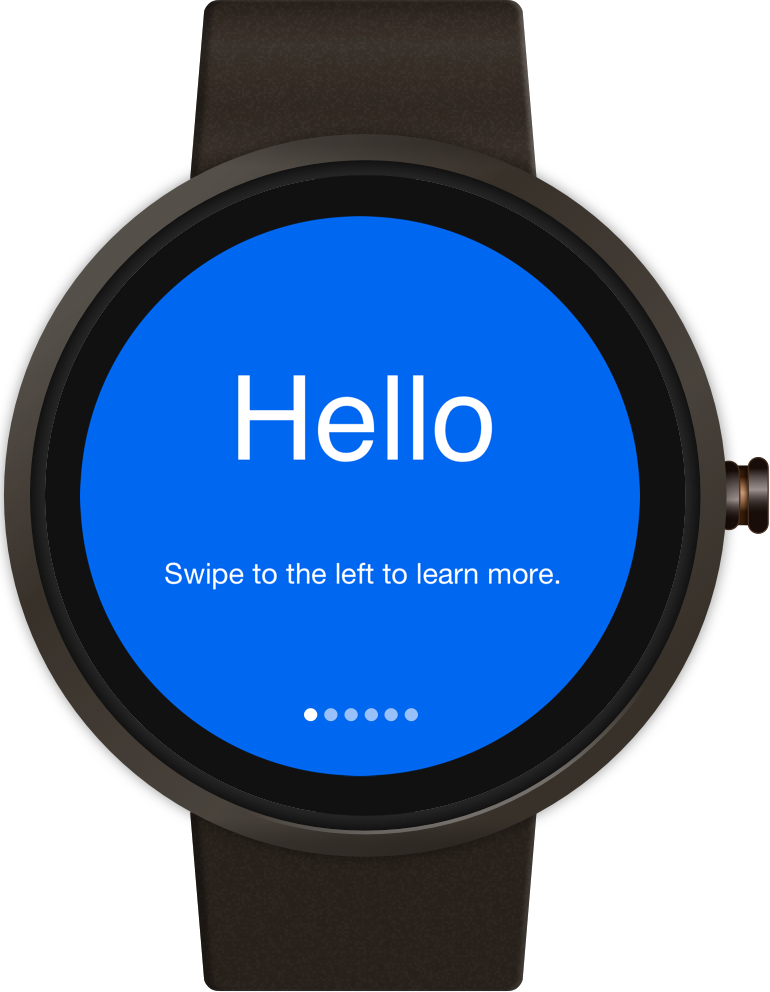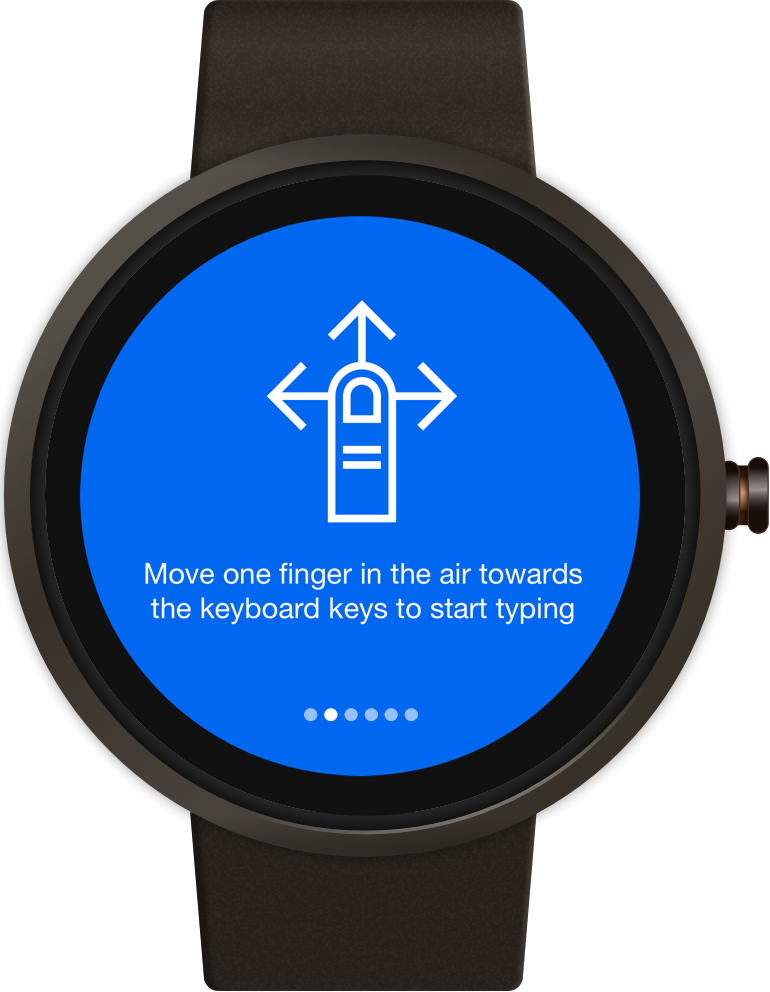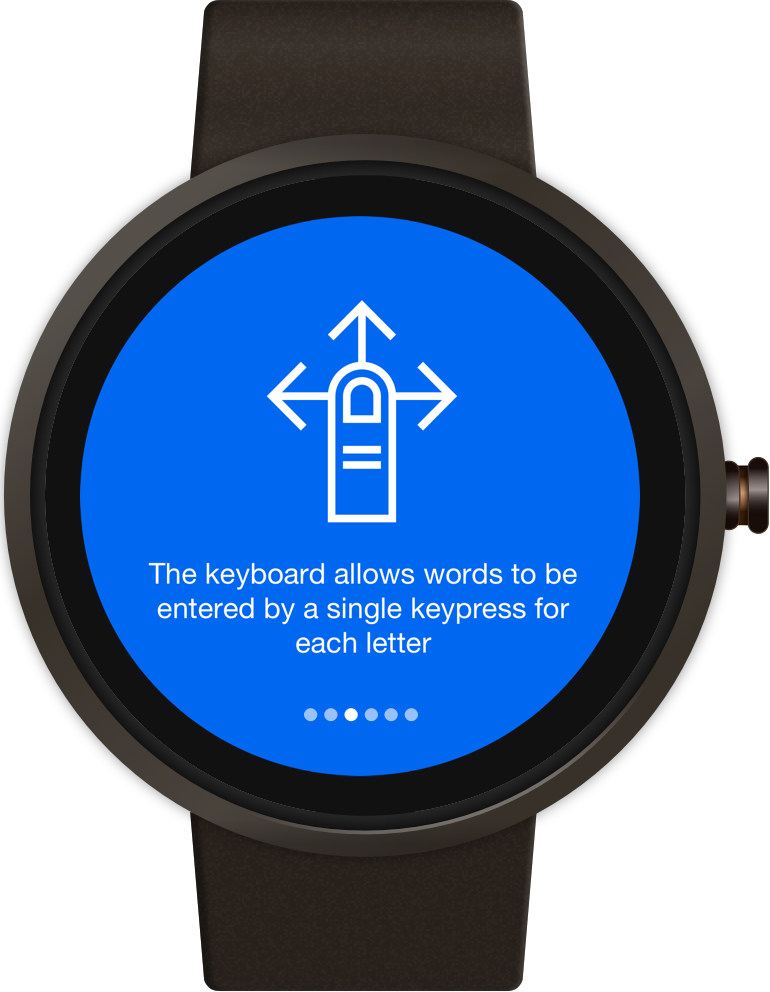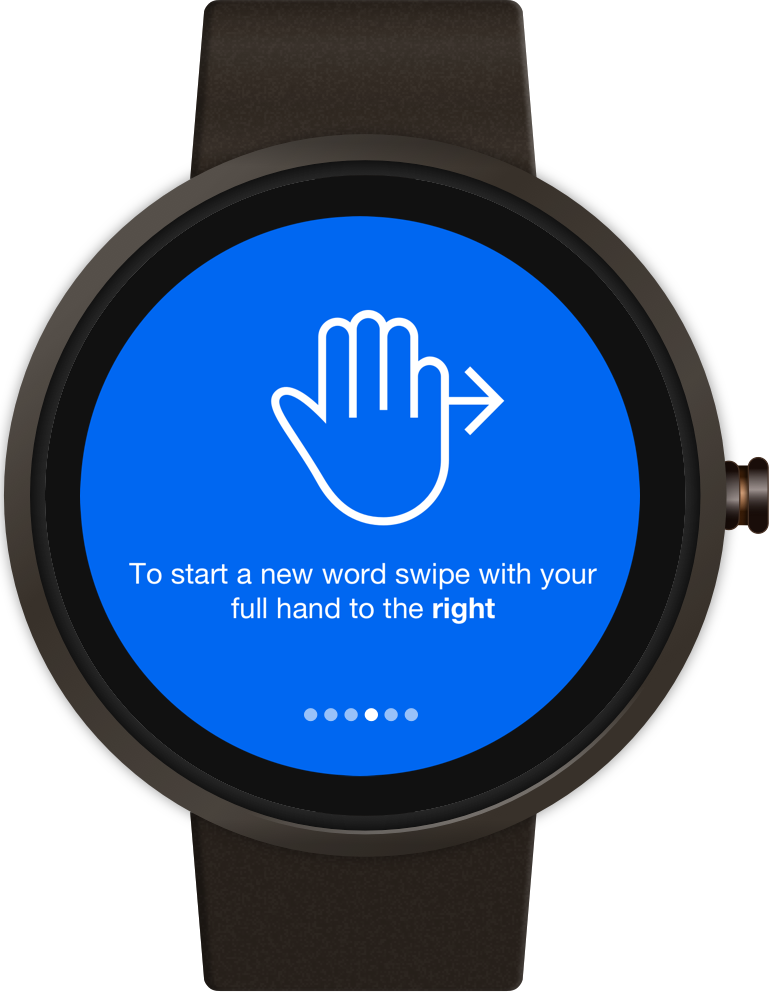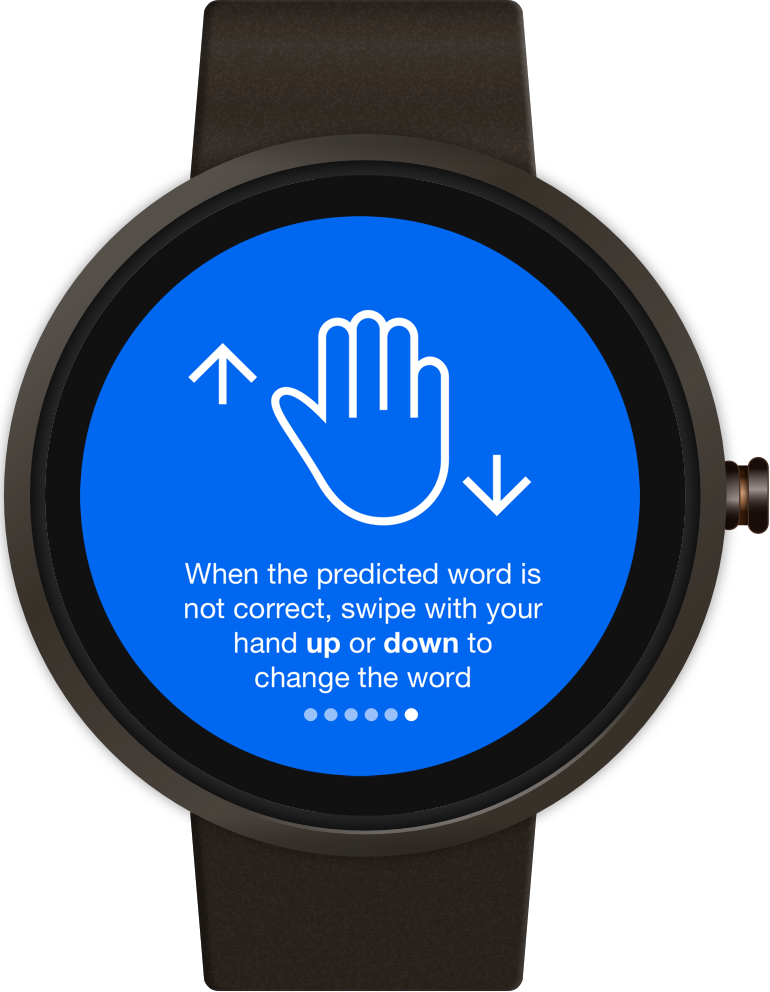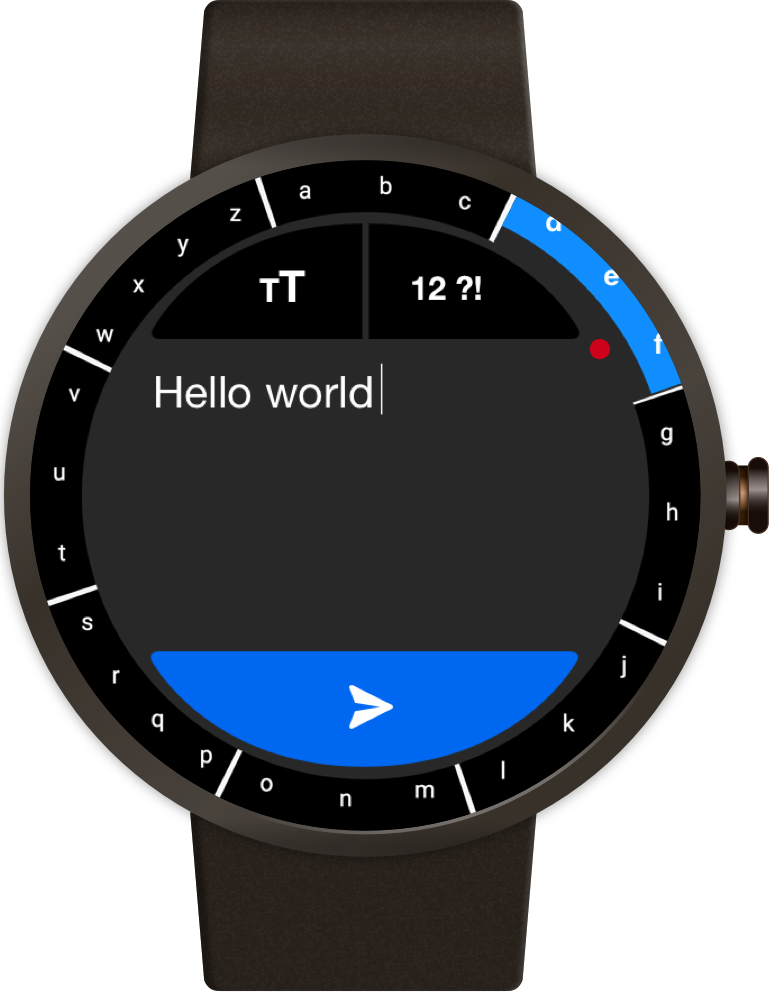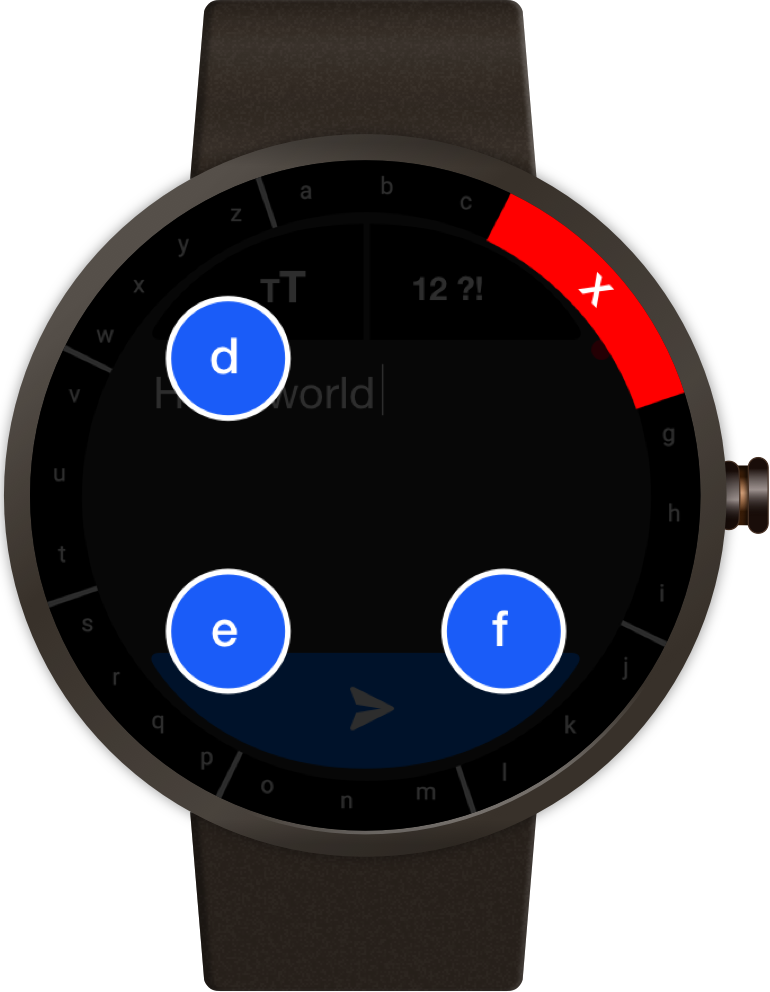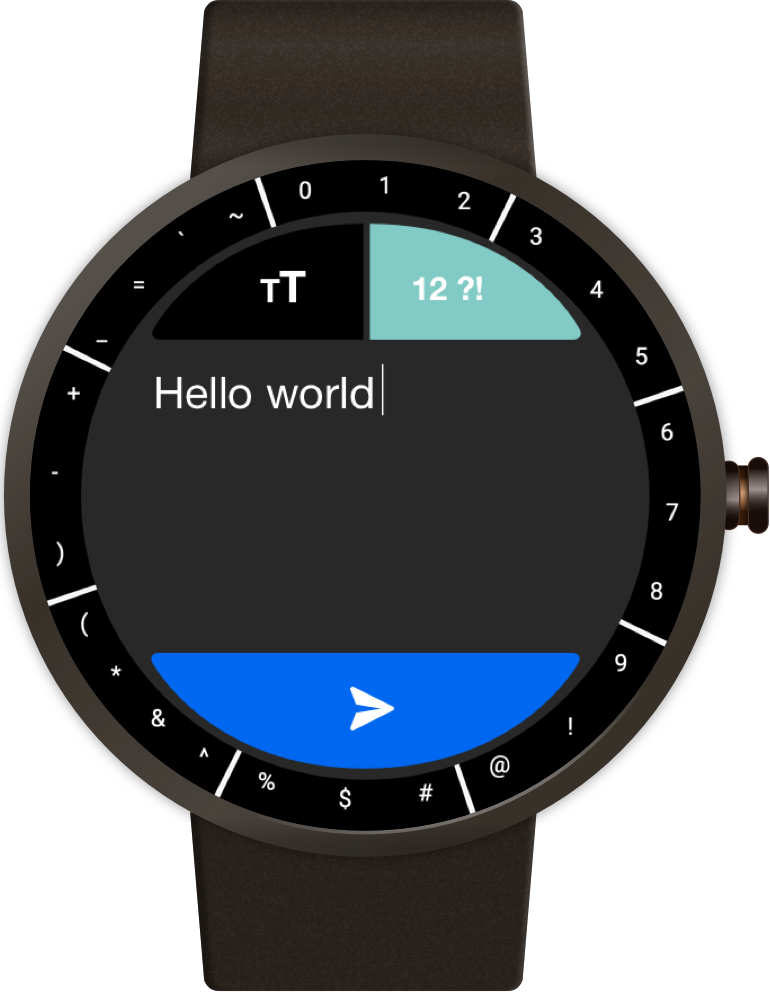Smartwatch Typing concept
Researching and designing a text-entry solution for smartwatches by making the use of mid-air gestural
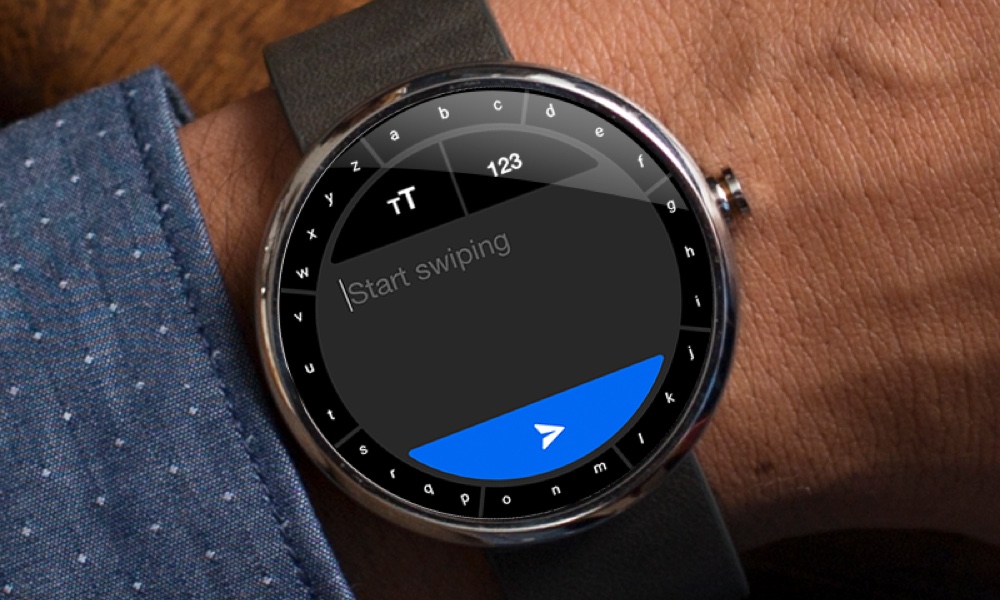
Summary
Smartwatches have limited methods for text-entry. Often they make use of handwriting or voice dictation. Handwriting text-entry is can be slow and voice dictation can be very inconvenient or awkward to use in public. therefore a good text-entry method needs to be created.
The Goal
The goal of this project was to explore another input method for text-entry on a smartwatch. Because the screen real estate of a smart watch is very limited we researched the feasability of of freehand mid-air gestures as an input method to type on a smartwatch.
My role
I was responsible for the concept, design, low-fidelity prototype and conducting the experiment with participants. My teammate has helped writing the paper and built a high fidelity prototype to work with a motion tracking device, the Leap Motion.
Result
After two user evaluations the participants were able to type 6.63 words per minute. This shows that our solution has potential, but the current techniques to track hand or finger movement has to be improved to make it more efficient and convenient to use.
Read the full paperTimeframe
2017
Team
Sander Ronde
